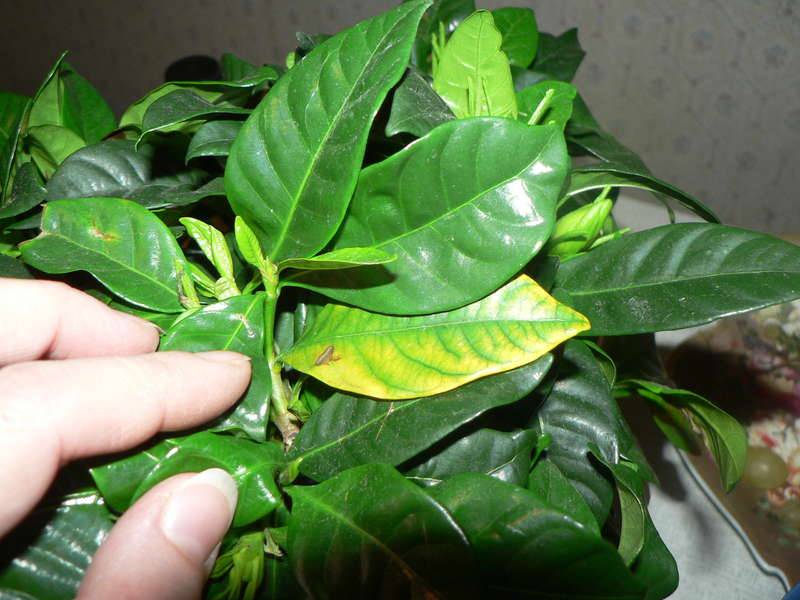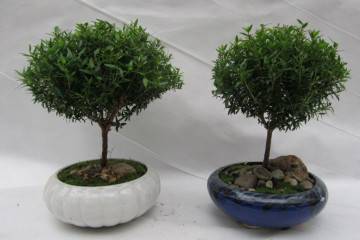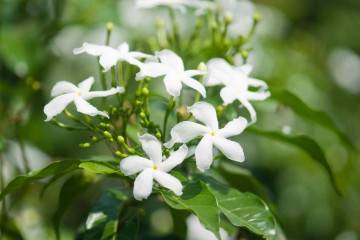Gardenia in bloom - what a house and outdoor plant looks like
Content:
Gardenia in bloom is a mesmerizing sight. But in order for this capricious plant to please with flowers that look like delicate roses, it will take a lot of effort. After all, this tropical guest is very demanding on growing conditions.
What does a gardenia look like
The plant of the madder family at home (this is the African continent, India, China, Japan) is an evergreen shrub or tree that reaches a height of 3 meters. In total, there are approximately 240 species of gardenia.
Gardenia jasmine is grown as an indoor flower. With proper care, the plant with dark green leaves with a glossy surface blooms from early July to late October. The maximum height that gardenia reaches at home is no more than half a meter.
Jasmine white gardenia can delight with flowering up to six months. But the tropical guest is very demanding at the same time to the composition of the soil, the regime of irrigation and feeding.
To imagine how gardenia blooms, you can pay attention to the buds of peonies. Outwardly, they are similar. Gardenia flowers are large enough, delicate and fragrant. They grow in groups of 5-6 or singly. The diameter of the blossoming flower reaches 5-7 cm. The aroma resembles a mixture of jasmine with a lemon note. Flowers can be simple, semi-double and double.
Most often, white gardenia grows in the middle lane, but specimens with delicate pastel shades can be found. In the center of the bud, stamens are formed, there can be 5-9 of them. After flowering, round or pear-shaped fruits are formed with a large number of seeds inside.
Indoor flower gardenia
Russian flower growers are familiar with dwarf varieties of jasmine gardenia. It is grown as a houseplant; outdoor gardenia is less common. It is a little easier to grow a gardenia flower at home. In order for a houseplant to become a decoration of any room, you will need to observe a certain level of humidity and lighting conditions.
Before buying a plant that is expensive enough, you should find the right place for it. The flower grows well on the windowsill of the south or east side. For lush flowering, it is recommended to take the pots out to the balcony or garden in the summer.
Gardenia jasmine varieties that are grown at home
Gardenia varieties such as:
- Fortune (Fortuneana). A variety with double flowers that look like a camellia. Flowers in diameter can reach 12 cm. They have a pronounced aroma, which led to the use of this variety in the production of perfumery products.
- First love is a cultivar that blooms twice a year. It is characterized by large cream-colored flowers reaching a diameter of 15 cm. Flowering is accompanied by a strong pleasant scent.
- Variegata is one of the most compact varieties. The plant is distinguished by variegated leaves - light green with brown blotches. The most optimal variety for growing in pots. During flowering, it emits a pronounced odor. It grows rather slowly.
- Vietnamese. It is an evergreen fast-growing shrub with several trunks.It blooms with single cream-colored buds. This creates a sweet aroma. It should be borne in mind that the aroma of the Vietnamese gardenia intensifies at night.
- Citriodora is another variety with a characteristic strong scent similar to an expensive perfume. A fairly large bush, highly branched, with large rounded leaves with a glossy sheen. Blooms profusely with small single flowers. Terry flowers, no more than 3 cm in diameter.
For planting in a garden or greenhouse, the following are more suitable:
- Outdoor gardenia. She prefers space and plenty of light. However, the bushes must be shaded from direct sunlight. Most often, street varieties are tall shrubs, less often small trees with a cone-shaped stem.
- Regal is a very rare species with flowers of unusual shape. Can be planted outdoors before the plant begins to bloom. In the fall, it is recommended to transplant it into pots and send it indoors to protect the plant from winter frosts, which are a danger to tropical guests.
- Ternifolia is a guest from Thailand. This variety, like the Dorama hydrangea in bloom, is very popular due to its decorative effect. A plant with intertwining branches and large white flowers. This species is resistant to chlorosis.
Features of growing gardenia
When buying a flower in a specialty store, you need to carefully research the health of the plant. Since gardenia is quite expensive, you can find specimens that are sold on stock. Don't rush to buy. As a rule, weakened or diseased plants are sold at a reduced price. It will be quite difficult to cure such a plant at home.
The tropical beauty prefers a well-lit place and sufficient moisture, so the soil under the flower must be constantly moisturized. The optimum temperature for keeping in summer is not higher than 25 degrees.
If a place on the southern windowsill is chosen for the gardenia to live, then the flower should be protected from direct sunlight at noon. The best protection options are a light curtain or blinds. If you do not shade, then sunburn will occur on the leaves, which will turn into a fall in the future. But you don't need to keep the plant in the shade either. It needs good lighting. Ideal for gardenia is 12 hours of daylight.
Leaving during flowering
When buds appear on a gardenia, it should not be disturbed. Many growers, trying to help the plant, turn the pots with their buds towards the light. For gardenia, this is simply contraindicated. A change in position at the beginning and during flowering can cause the plant to shed its buds and leaves.
In no case should the pot be moved to another place during the flowering gardenia. When choosing a place for a flower, it must be borne in mind that all its types exude a strong aroma. For this reason, it is not recommended to put a flower pot in the bedroom and children's room.
A warm-loving visitor from tropical regions is very demanding on the temperature regime. To provide the gardenia with the necessary conditions, you will need to make an effort to maintain constant temperatures:
- In spring and summer, the air temperature should be + 22-24 degrees during the daytime, + 12-16 degrees at night. During budding - +20 degrees.
- In winter, the temperature will need to be reduced to + 17-20 degrees during the day and +16 degrees at night.
The room that contains the gardenia must be ventilated, but the flower must be protected from drafts.Otherwise, the buds will drop and the leaves will turn yellow.
All types of jasmine gardenias are also demanding on humidity. Before blooming flower buds, spraying with soft water at room temperature on the leaves with a spray bottle is required. After budding, spraying is not performed. When water gets on the buds, the plant drops them. Do not allow the soil surface to dry out in the pots in summer, and in winter, a crust on the soil surface is allowed.
Gardenia is also demanding on the composition of the soil. It should be slightly acidic. Therefore, when watering 2 times a week, add 2-3 drops of lemon juice per 1 liter of water to the water.
How and when to feed a flower
To prevent chlorosis, iron chelate should be added. As a preventive measure, this procedure is used 1-2 times per season. Top dressing is done no more than 2 times a month in spring and summer. A liquid fertilizer for flowering azaleas is suitable for this. Dry twigs and inflorescences must be removed. To achieve splendor, you can pinch the top leaves.
You can endlessly look at the gardenia in bloom, so the capricious beauty is undoubtedly worth it to create the proper growing conditions for her. To learn all the intricacies of flower care, you can take a special master class.
Whichever species of jasmine gardenia is chosen for the house or garden - a bush or a formed stem, they all need care and attention. In response to the gardener's troubles, the plant will give extraordinary beauty and delicate aroma of expensive perfume.




















